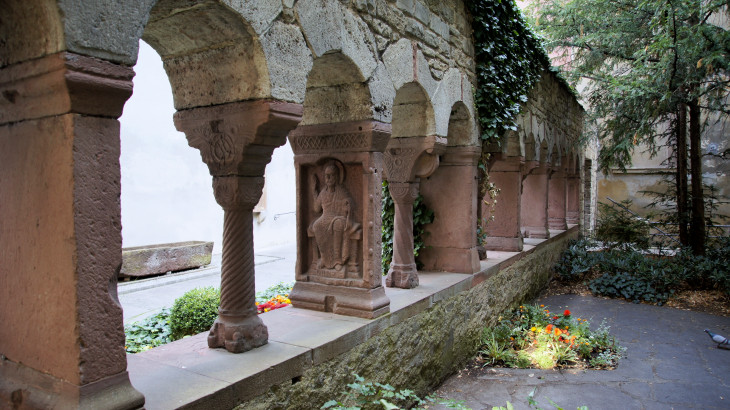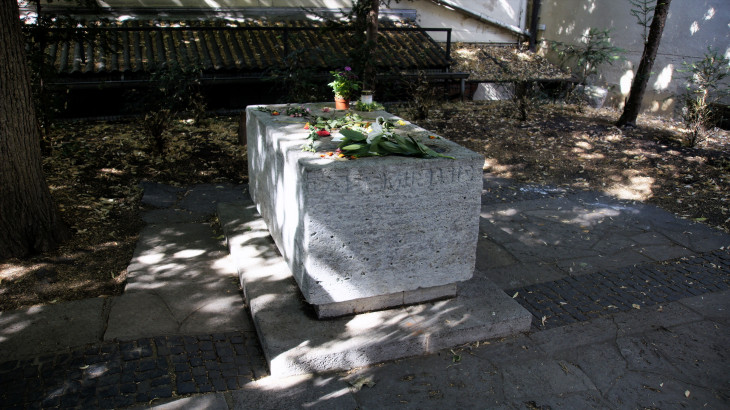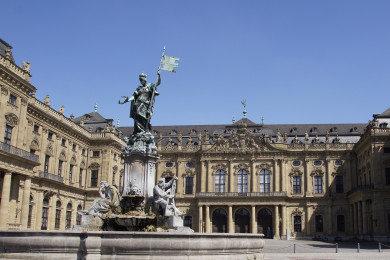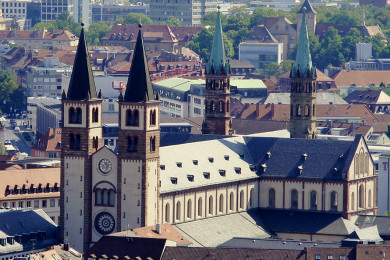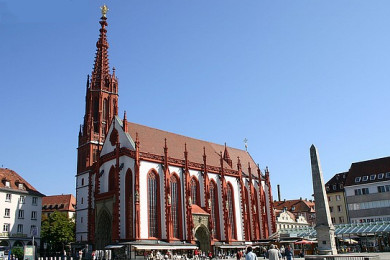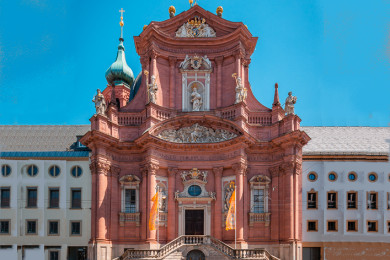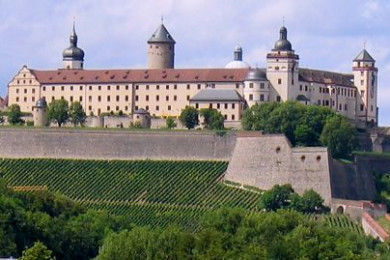The church of the Neumünster Abbey (originally a Romanesque basilica of the 11th century) was built over the burial place of St. Kilian and his companions, who were murdered here as missionaries in 689. In 1250, after extensive remodeling, the octagonal bell tower was added, and in 1614 the church was vaulted. After the demolition of the western part in 1711, the baroque dome and the concave facade made of red sandstone were created, which is considered one of the greatest works of the German baroque.
During the air raid on Würzburg on March 16, 1945, the structural substance was preserved. Most of the interior furnishings burned, but there are still some outstanding individual works from the Middle Ages and the Baroque period.
Kilian, Kolonat and Totnan, copies of the Riemenschneider wooden figures by Heinrich Schiestl in the Neumünster church, Würzburg
Kilian, of Iro-Scottish descent, came to Würzburg in 686 AD with his companions Kolonat and Totnan, He preached and missionized. In the process, he also converted the pagan Franconian Duke Gozbert and his entire family. He even got Gozbert to separate from his companion Gailana, because she had been married to Gozbert's brother before. The latter, enraged by the separation, hired an assassin and had the bishop murdered along with his companions (ca. 689). Their bodies were buried along with the sacred utensils and the precious Kiliani Gospels.
In 788, in the presence of Charlemagne, his bones were transferred to the cathedral built as a burial place in Würzburg, whose successor building is today's Neumünster with Kilian's tomb.
In the Lusamgärtlein (a small walled courtyard, formerly called Grashof) behind the Neumünster is the grave monument of Walther von der Vogelweide.


